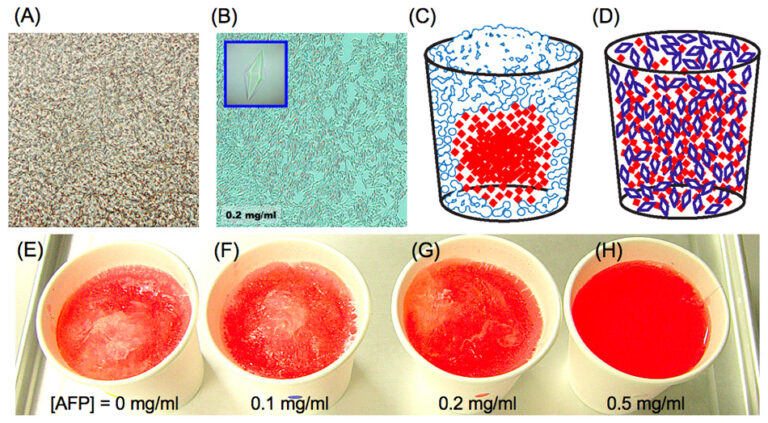The following shows photomicroscope snapshots of (A) an ordinary ice block and (B) a frozen AFP-solution. The (A) looks like a ‘concrete fluid’ with numerous bubbles. This concrete expands with time and phisically destroys the inside of the frozen material. In contrast, the ice block containing 0.2-0.5mg/ml of AFP becomes an assembly of numerous tiny ice bipyramids (B). The ice crystals in (B) are hardly sticked together, and that they have less power to destroy an inside structure of the frozen material. Such an AFP-induced effect was verified by simple experiments using a colored water. When it freezes a water containing red-colored ink, the ink particles are excluded from the concrete ice (solid phase) to be concentrated into a center portion as sketched like (C). This is generally called “freeze-concentration phenomenon”. In contrast, an entirely red-colored ice is created when the solution contains AFP, as sketched like (D). The photos (E) – (H) show the actual photos of the frozen colored ice prepared in a home freezer (-18 deg.) by overnight freezing. Each contains 0, 0.1, 0.2, and 0.5mg/ml of AFP, respectively. The power of such “freeze-concentration-inhibition” might be correlated with the TH value of AFP.


